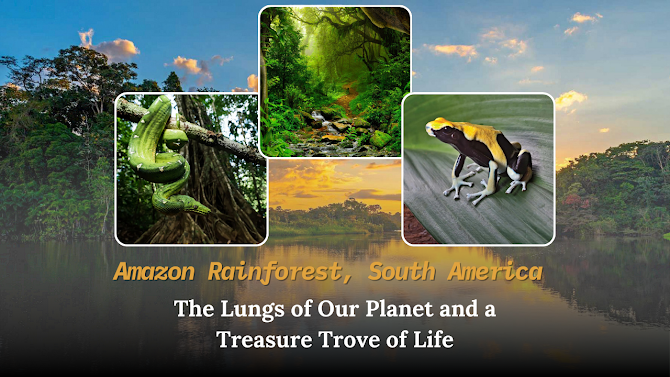Introduction
Nestled in the heart of Croatia, Plitvice Lakes National Park stands as a testament to nature's grandeur. With its cascading lakes, lush forests, and diverse wildlife, it's no wonder this park is a UNESCO World Heritage site and a must-visit destination for nature enthusiasts.
Overview of Plitvice Lakes National Park
Established in 1949, Plitvice Lakes National Park is the oldest and largest national park in Croatia, covering an area of approximately 296.85 square kilometers. The park is renowned for its 16 terraced lakes, interconnected by a series of waterfalls and set against a backdrop of karst landscapes. Wikipedia Visit Croatia
Geographical and Ecological Significance
Formation of the Lakes
The lakes are a result of the confluence of several small rivers and subterranean karst rivers. Over time, natural travertine dams have formed, creating a dynamic system of lakes and waterfalls. Wikipedia
Biodiversity
The park is home to a rich variety of flora and fauna, including:
-
Over 1,000 plant species
-
50 species of mammals, such as brown bears and wolves
-
157 bird speciesThe Times UNESCO World Heritage Centre
This biodiversity makes Plitvice a significant ecological haven in Europe. World Heritage Sites
Visitor Information
Best Time to Visit
While the park is open year-round, each season offers a unique experience:
-
Spring (April to June): Waterfalls are at their peak flow, and the flora is in full bloom.
-
Summer (July to August): Warm weather and lush greenery, but also the most crowded period.
-
Autumn (September to October): Fewer crowds and vibrant fall colors.
-
Winter (November to March): Snow-covered landscapes and frozen waterfalls create a magical atmosphere.Pasha is Home
Entrance Fees
Entrance fees vary depending on the season:
-
High Season (June to September): Approximately €40 per adult.
-
Low Season (October to May): Approximately €10 per adult.Short Girl On Tour Rick Steves Community
Discounts are available for students, children, and groups.
Operating Hours
The park is open daily, with operating hours varying by season. It's advisable to check the official website for current hours before planning your visit.
Exploring the Park
Hiking Trails
Plitvice offers several well-marked trails, catering to different fitness levels and time constraints:Rearview Mirror
-
Trail A: 2-3 hours, covering the Lower Lakes.
-
Trail B: 3-4 hours, including a boat ride across Lake Kozjak.
-
Trail C: 4-6 hours, encompassing both Upper and Lower Lakes.
-
Trail K: 6-8 hours, a full-day hike covering the entire park.Rick Steves Community, The Times, Wikipedia
Each trail offers unique perspectives of the lakes and waterfalls. Visit Croatia
Boat and Train Rides
To enhance the visitor experience, the park provides electric boat rides across Lake Kozjak and panoramic train rides that connect different sections of the park.
Nearby Attractions
Rastoke Village
Often referred to as "Little Plitvice," Rastoke is a picturesque village located about 30 kilometers from the park. Known for its watermills and waterfalls, it's a perfect stopover for visitors heading to or from Plitvice. The Sun
Tips for Visitors
-
Early Arrival: To avoid crowds, especially during peak season, arrive early in the morning.
-
Footwear: Wear comfortable, waterproof shoes suitable for walking on uneven and potentially slippery surfaces.
-
Weather Preparedness: Check the weather forecast and dress in layers, as conditions can change rapidly.
-
Stay Hydrated: Carry water and snacks, as facilities within the park are limited.
-
Photography: Don't forget your camera to capture the stunning landscapes.
Conclusion
Plitvice Lakes National Park is a natural wonder that offers breathtaking scenery, diverse wildlife, and a peaceful retreat from the hustle and bustle of daily life. Whether you're a seasoned hiker or a casual traveler, the park's beauty is sure to leave a lasting impression.
Note: For the most up-to-date information on operating hours, entrance fees, and trail conditions, please visit the official website of Plitvice Lakes National Park. UNESCO World Heritage Centre


.png)
.png)
.png)
.png)
.png)
.png)
.png)
.png)
.png)

.png)
.png)
.png)
.png)

.png)
.png)
.png)

.png)

.png)
.png)
.png)
.png)
.png)
.png)
.png)